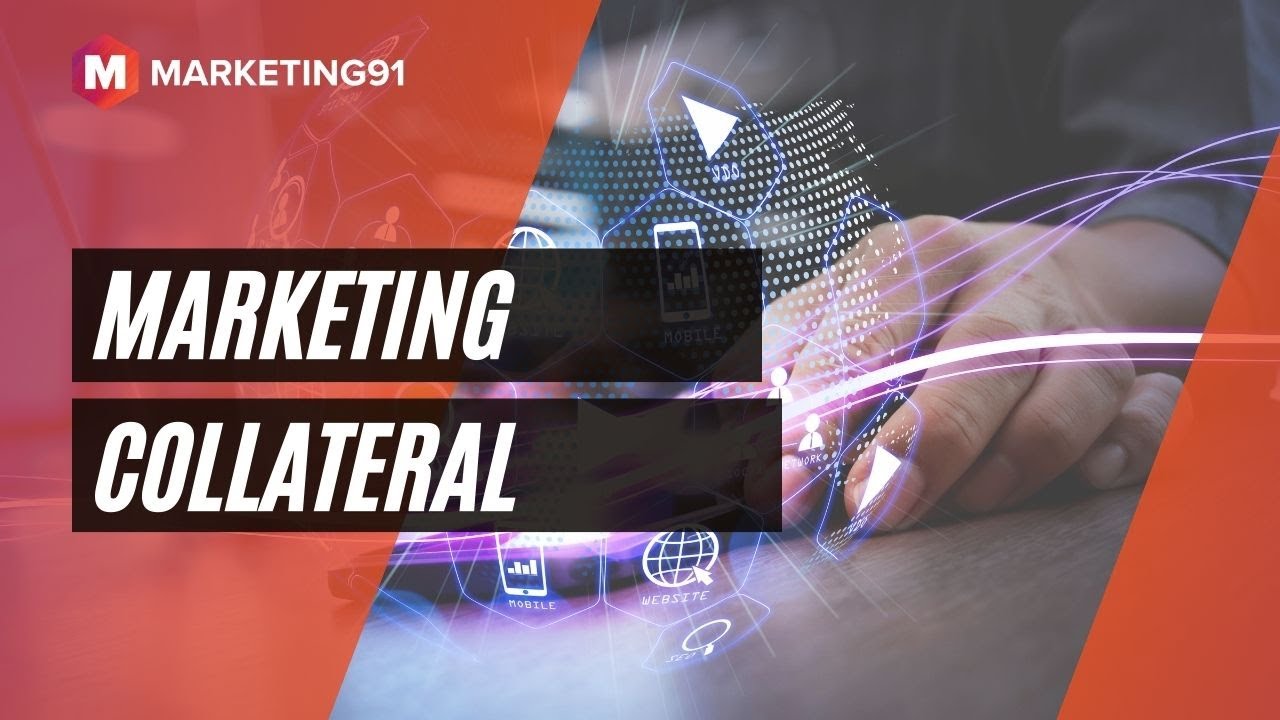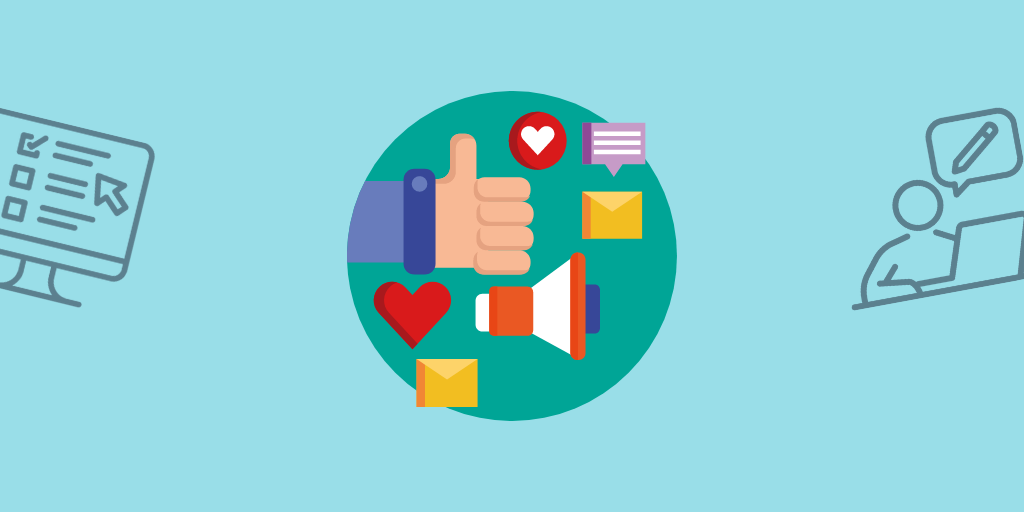Any media contentused to promote a company's products or services is referred to as marketing collateral. Print items such as posters and flyers are included, as well as digital content such as catalogs and digital publications. Marketing collateral is anything that may be used to express your company's brand message.
Printed materials were once frequently used by enterprises. Traditional approaches, which include direct interaction with customers, are no longer the sole choice. The internet has enabled firms to reach more people than ever before without relying only on face-to-face encounters.
The shift to internet media has created a plethora of chances for businesses to market their goods and services. You may now send customized emails to as many people as you wish, which serve as portals to all of your other material. Everything you see online can now be considered collateral, thanks to the internet: e-magazines, white papers, blog posts, digital annual reports, and more.

Marketing Collateral - Meaning, Importance, Different types of Collaterals in Marketing (255)
Blog Posts
Creating effective marketing material is frequently a question of continually giving value to your target audience. A well-maintained corporate blog is one of the finest platforms for creating and promoting the type of information that does that on a regular basis.
It enables you to augment your sales efforts with useful information and audience involvement, increasing traffic to your website and creating leads with practical advice, knowledge, and amusement.
Good blog articles, like any other type of excellent marketing content, may project authority in your business. You want to demonstrate that you're up to date on industry trends and understand the complexities of your sector – consistently churning out high-quality, useful information may assist with that and put your prospects at rest.
E-Books
E-books are long-form pieces of material created by people or corporations to educate readers and display their knowledge on a certain topic. While white papers are likewise instructional, e-books are more enjoyable and less technical or in-depth. Because they are regarded as a premium material, you may choose to request an email address or even a price in exchange for access.
Testimonials
Testimonials are basically condensed bite-sized case studies. Many, if not most, prospects do not have the time or inclination to go into a full-fledged case study. If you want to reach them, you'll need to deliver quick-hitting material that they can passively scan. Testimonials can help with this.
White Papers
A white paper is a detailed, convincing report on a certain issue. In general, one of these publications will provide an issue and a solution to it.
It is usually more technical and less user-friendly than an Ebook. It's intended to attract a more closely connected or interested audience in your sector – an audience that may naturally run across the issue at the heart of the paper.
Product pitches should not be included in white papers. It's better if they're objective and educated. Having said that, the themes you chose must be relevant to your organization or industry.
This type of collateral must also be well researched, structured deliberately, polished, and written in a serious tone. That implies there will be no showy language or charming gimmicks.
Brochures
Brochures are informational booklets about a firm and its products or services. They range from low-cost books to high-gloss, high-design materials. Brochures should be scannable, so use graphics as well as brief, snappy language or bullet points to communicate your message. Brochures aren't the place for packed, long-form content.
Case Studies
Case studies are product-specific publications that describe how individual customers achieved success by using your product or service. This format differs from the others in that it is never product-agnostic.
Each case study is created in partnership with a happy customer. It's a type of cross-promotion that demonstrates how your product or service works in practice — a road map that allows prospects to envisage what you could accomplish for their company.
Case studies, like practically every other item on this list, are instructional. They give a more detailed description of how your product or service operates by using an active example. It's also another way to create trust.
You may strengthen your company's image as a reliable, experienced organization with a product or service that provides results if you can point to trustworthy clients who are prepared to vouch for your firm in great detail.
Videos
Video is a popular method for businesses to reach out to their consumers and motivate them to take action. And it's simple to understand why. With more than half of marketers choosing video as the sort of content with the best return on investment (ROI), it's worth your time to think about it.
Test the waters and identify forms that can assist you in achieving your objectives. There's a lot you can do, from how-to explainers and demos to interviews, product overviews, testimonials, and more.

Tips On How To Build A Great Marketing Collateral
Prioritize Your Audience
While it may seem apparent, you must always keep your target audience in mind while developing marketing collateral. Who are you speaking with? What are their worries, pain spots, motivators, loves, and dislikes? Understand who you're speaking with and assist them in making a choice, solving an issue, or achieving whatever objective they have in mind. Only then will you be able to obtain what you desire.
Maintain Brand Consistency
Your brand should be consistent regardless of how varied each piece of marketing collateral is. Whether you need to guarantee that designers use the same red across all logos or that your marketing team only utilizes stock photographs with a specific look and feel, brand consistency is essential.
Establishing brand rules is crucial to preventing misappropriation. Technology, such as a digital asset management (DAM) platform, can also help by ensuring that people only have access to approved and on-brand marketing collateral and design files.
Allow Data To Guide Your Judgments
You may generate marketing collateral on a daily basis, but it's not worth it until you know (truly know) it's effective. Determine what is and is not working so that you may maximize your efforts.
Talk to customers about what content they require, but don't forget to look at the stats. Tools like as Google Analytics, DAM Insights, and even examination of unique identifiers such as redemption codes are excellent sources of usable, hard data.
What Is The Meaning Of Collateral Marketing?
Any media content used to promote a company's products or services is referred to as marketing collateral. Print items such as posters and flyers are included, as well as digital content such as catalogs and digital publications. Marketing collateral is anything that may be used to express your company's brand message.
What Are Collateral Items?
Any picture or media used to promote your brand is considered collateral. Anything from a businesscard to a seasonal door decal on a storefront window qualifies. Almost every point of interaction you have with potential clients and consumers involves some form of collateral piece.
Conclusion
Every brand and company requires high-quality marketing material. Creating marketing collateral, on the other hand, is not a one-time effort. To keep current with consumer trends and new technology in their corporate environment, marketing teams must examine and update material on a regular basis.
The more tailored your marketing collateral is to the demands of your target audience, the more useful it will be to your marketing efforts and your business.
